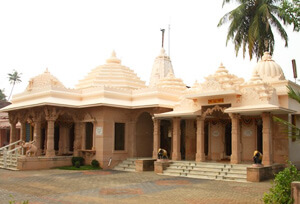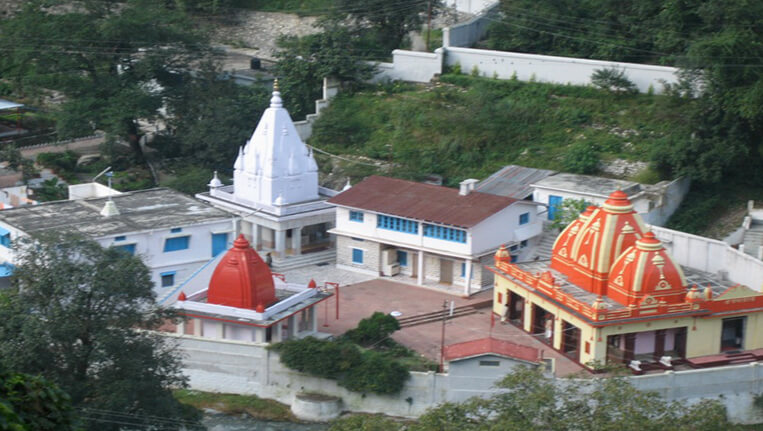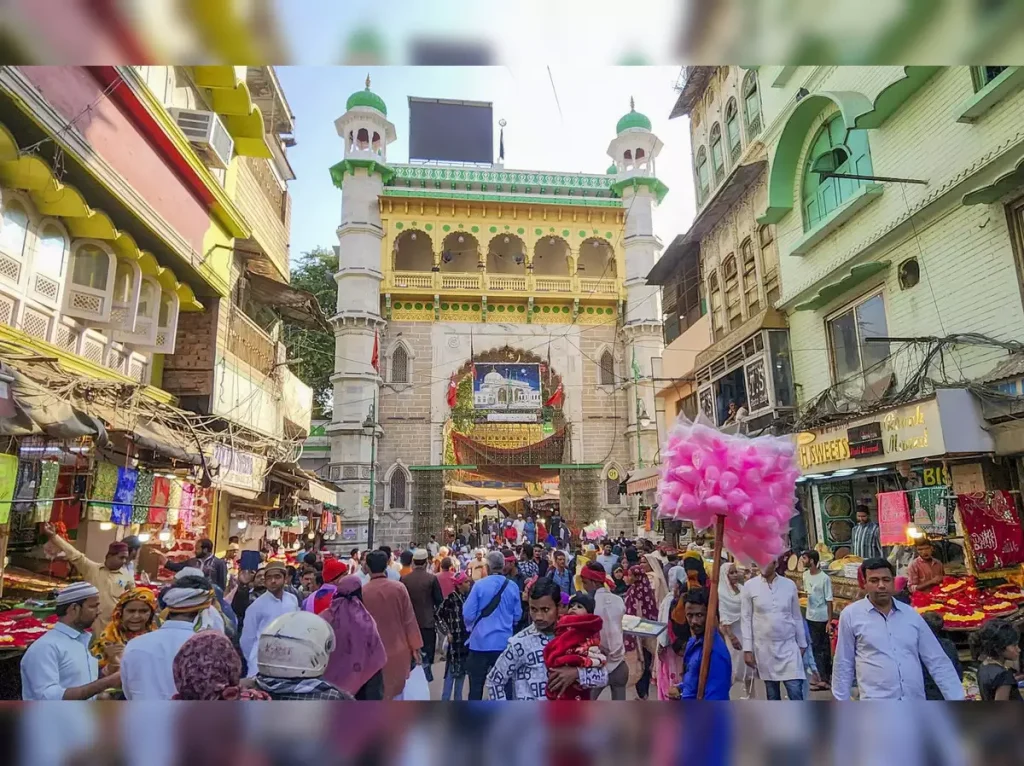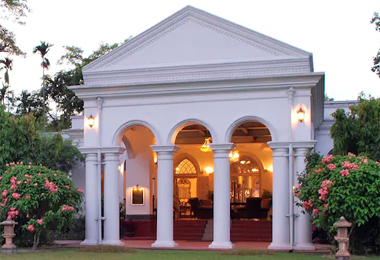Ajmer Sharif Dargah is a revered Sufi shrine in India. It attracts millions of devotees each year.
Nestled in the heart of Rajasthan, the Ajmer Sharif Dargah stands as a beacon of faith and spirituality. The shrine is the final resting place of the revered Sufi saint, Khwaja Moinuddin Chishti. Known for its peaceful ambiance and rich history, it draws people from all walks of life.
Visitors come seeking blessings, solace, and a connection to the divine. The Dargah complex is an architectural marvel, showcasing intricate designs and craftsmanship. Whether you’re a spiritual seeker or a history enthusiast, the Ajmer Sharif Dargah offers a unique and enriching experience. Join us as we delve into the significance and allure of this sacred site.
Credit: en.wikipedia.org
Historical Significance
Ajmer Sharif Dargah, located in the heart of Rajasthan, India, stands as a testament to centuries of rich history and cultural fusion. This sacred site is not just a place of spiritual solace but a beacon of historical significance that has shaped the region’s narrative over time.
Origins
The origins of Ajmer Sharif Dargah date back to the early 13th century. Founded by Khwaja Moinuddin Chishti, a revered Sufi saint from Persia, the dargah embodies the essence of his teachings of love, peace, and harmony. Khwaja Moinuddin Chishti arrived in Ajmer in 1192 and dedicated his life to spreading the message of Sufism. His presence attracted followers from diverse backgrounds, turning Ajmer into a melting pot of cultures and traditions.
Have you ever wondered how a single individual’s vision can transform an entire region? Khwaja Moinuddin Chishti’s arrival in Ajmer did exactly that. His dedication to serving humanity and promoting unity resonated deeply with the local populace and visitors alike, making the dargah a revered destination for people seeking solace and guidance.
Important Events
Ajmer Sharif Dargah has been a witness to numerous significant events throughout history. One of the most notable events is the annual Urs festival, commemorating the death anniversary of Khwaja Moinuddin Chishti. This event attracts thousands of devotees from all corners of the world, showcasing the enduring legacy of the Sufi saint. The festival is marked by vibrant celebrations, devotional music, and communal prayers.
Another pivotal moment in the dargah’s history was the visit of Mughal Emperor Akbar in the 16th century. Akbar’s pilgrimage to the dargah was driven by his desire for an heir, which he believed could be fulfilled through the saint’s blessings. His visit not only underscored the spiritual significance of the dargah but also led to the construction of grand structures within the complex, enhancing its architectural splendor.
Did you know that the dargah also played a role in the freedom struggle of India? Many freedom fighters sought refuge and divine guidance at Ajmer Sharif Dargah during their quest for independence. This connection to the freedom movement further elevates the historical importance of the site, making it a symbol of resilience and hope.
As you explore the rich history of Ajmer Sharif Dargah, consider the impact that these events have had on the region and beyond. How do these historical moments shape your understanding of the dargah’s significance? Reflect on the enduring legacy of Khwaja Moinuddin Chishti and the countless lives he has touched through his teachings and actions.
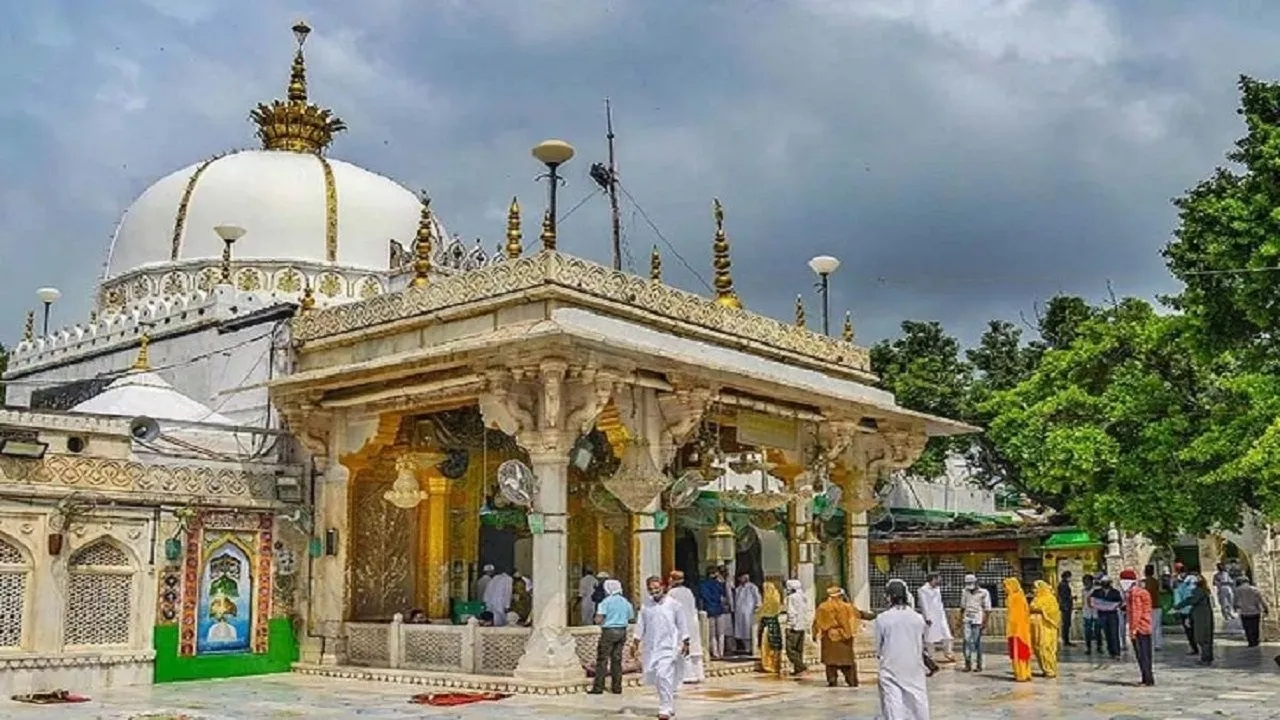
Credit: www.opindia.com
Architectural Marvel
The Ajmer Sharif Dargah is an architectural marvel. This sacred shrine attracts millions of pilgrims every year. It is not just a place of worship. It is a masterpiece of design and artistry. The Dargah’s architecture tells a story of its rich history and cultural significance. Let’s explore its stunning design elements and artistic features.
Design Elements
The Dargah’s design is a blend of Mughal and Rajput styles. This combination creates a unique visual appeal. The main entrance is grand and welcoming. It features intricate carvings and detailed patterns. The inner courtyard is spacious, allowing pilgrims to gather and pray.
The dome of the Dargah is another striking feature. It is covered in white marble and adorned with gold. This dome is visible from afar. It symbolizes the purity and sanctity of the shrine. The Dargah also has several smaller domes and minarets. These add to the overall beauty of the structure.
Artistic Features
The artistic features of Ajmer Sharif Dargah are breathtaking. The walls are decorated with beautiful calligraphy. These writings include verses from the Quran. They are written in elegant and flowing scripts. This adds a spiritual aura to the place.
The marble work in the Dargah is exquisite. The floors and walls have intricate inlays of colored stones. These designs form beautiful patterns and motifs. The craftsmanship is of the highest quality. It reflects the skills of the artisans of that era.
Another notable feature is the intricate jali work. These are lattice screens made from marble. They allow light and air to pass through. This creates a serene and peaceful atmosphere inside the Dargah. The jali designs are complex and delicate. They showcase the artisans’ attention to detail.
Cultural Importance
Ajmer Sharif Dargah holds a special place in the hearts of millions. It is not just a religious site, but a cultural hub. People from different backgrounds visit and celebrate together.
The dargah symbolizes unity and peace. It welcomes everyone with open arms. Visitors feel a deep connection to the place and its history.
Local Traditions
The dargah is rich with local traditions. One such tradition is the offering of a chadar, or sacred cloth. This symbolizes respect and devotion. Many believe it brings blessings and good fortune.
Another tradition is tying a thread to the shrine. People make a wish while doing this. If the wish comes true, they return to untie the thread. These traditions bind the community together.
Festivals
Ajmer Sharif Dargah is vibrant during festivals. The annual Urs festival is the most significant. It marks the death anniversary of Khwaja Moinuddin Chishti. Thousands of devotees gather to celebrate his life and teachings.
During Urs, the dargah is beautifully decorated. Special prayers and qawwalis (devotional songs) fill the air. The festival creates a sense of unity and joy among the visitors.
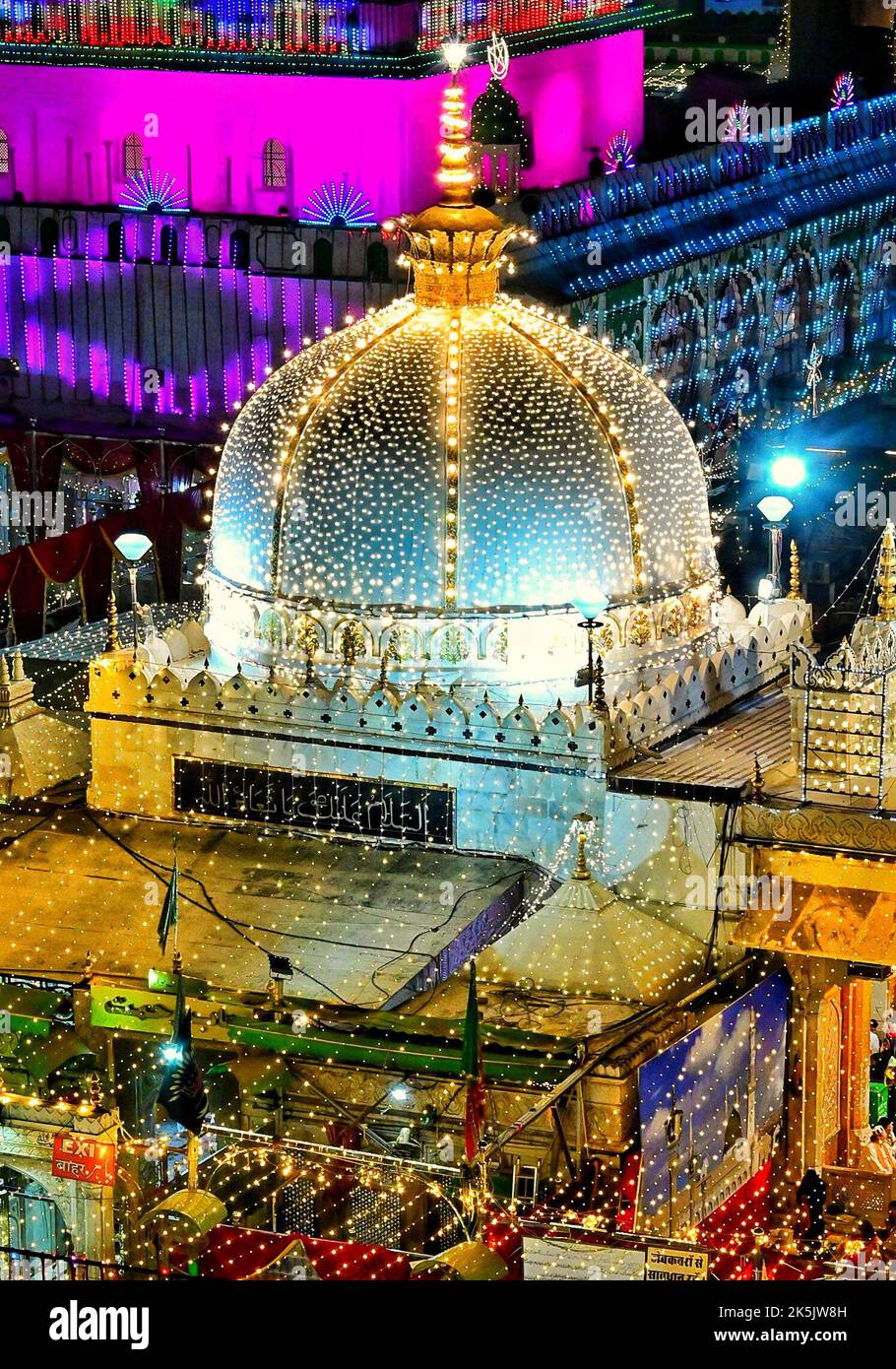
Credit: www.alamy.com
Spiritual Practices
Ajmer Sharif Dargah is a significant spiritual site in India. Devotees from various faiths visit to seek blessings and inner peace. The serene atmosphere fosters deep spiritual practices and reflection.
Spiritual Practices at Ajmer Sharif Dargah When you step into the serene premises of Ajmer Sharif Dargah, you are immediately enveloped by a profound sense of peace. This sacred shrine, dedicated to the Sufi saint Khwaja Moinuddin Chishti, is a spiritual haven for millions. The spiritual practices observed here are both deeply traditional and uniquely personal, offering a pathway to inner peace. Let’s explore some of the key practices that devotees engage in. ###Rituals
The rituals at Ajmer Sharif Dargah are rich in tradition and imbued with spiritual significance. One of the most important rituals is the Chadar offering. Devotees bring a richly embroidered cloth to place over the saint’s tomb. This act symbolizes respect and devotion. Another significant ritual is the offering of flowers and sweets. As you bring these humble offerings, you can feel a sense of connection and gratitude. These simple acts are a means to express your love and seek blessings. Have you ever participated in the Langar (community kitchen)? This ritual of serving and eating together breaks down social barriers and fosters a sense of unity. The food, prepared with love and devotion, nourishes not just the body but also the soul. ###Prayers
Prayers at Ajmer Sharif Dargah are a deeply personal experience. Whether you come with a specific wish or just to find peace, the act of praying here is transformative. The serenity of the shrine allows you to quiet your mind and focus on your inner self. One powerful prayer practice is the Qawwali sessions held every evening. The soulful music and devotional songs transport you to a different realm. Have you ever felt music touch your soul? The Qawwali here is not just a performance; it’s a form of worship that resonates with your heart. Many devotees also engage in silent prayers. Amidst the hustle and bustle, you can find a quiet corner, close your eyes, and communicate with the divine. This act of silent communion helps you to reflect and find clarity in your thoughts. Have you ever wondered how these practices might change your perspective? Engaging in these spiritual activities can offer you insights and a sense of purpose that you might not find elsewhere. So, the next time you visit Ajmer Sharif Dargah, immerse yourself in these spiritual practices. Feel the profound peace and connection that countless others have experienced.Pilgrimage Experience
The Ajmer Sharif Dargah, a revered Sufi shrine, attracts millions of devotees yearly. Known for its spiritual significance, the Dargah offers a profound pilgrimage experience. Visitors find peace and solace, seeking blessings from the Sufi saint, Khwaja Moinuddin Chishti.
Travel Tips
Planning your visit to Ajmer Sharif Dargah? Start early to avoid crowds. The shrine gets busy, especially during festivals. Comfortable footwear is essential. You will walk a lot. Dress modestly to show respect. Cover your head before entering the shrine.
Carry a water bottle. It can get hot. Keep some change handy for offerings. Be prepared for security checks. Photography inside the Dargah is not allowed. Stay hydrated and keep your valuables secure.
Accommodation
Ajmer offers various accommodation options. There are budget hotels and luxury stays. Many hotels are near the Dargah. Book in advance during peak seasons. Check reviews before booking. Look for hotels with amenities like Wi-Fi and breakfast.
Some guesthouses provide a homely atmosphere. They offer a closer cultural experience. Choose what fits your needs and budget. Staying close to the Dargah saves travel time. Enjoy a comfortable stay, and immerse yourself in the spiritual journey.
Miracles And Legends
When you think about Ajmer Sharif Dargah, the mind often wanders to the extraordinary tales of miracles and legends that surround this sacred place. The Dargah, dedicated to the revered Sufi saint Khwaja Moinuddin Chishti, is not just a site of worship but also a ground for countless stories of divine intervention and supernatural occurrences. These stories have been passed down through generations, creating an aura of mystique and faith that draws millions of devotees every year.
Famous Stories
One of the most famous stories associated with Ajmer Sharif Dargah is that of Mughal Emperor Akbar. It is said that Akbar, desperate for a male heir, walked barefoot from Agra to Ajmer to seek the blessings of Khwaja Moinuddin Chishti. His prayers were answered, and he was blessed with a son, whom he named Salim. To honor the saint, Akbar built a mosque within the Dargah complex, which stands to this day as a testament to his gratitude.
Another captivating tale involves a drought that once struck the region. Locals believe that Khwaja Moinuddin Chishti’s prayers brought rain, ending the suffering of the people. Such stories of divine intervention are numerous, each adding to the spiritual richness of the Dargah.
Reported Miracles
Visitors often report experiencing miracles during their visits to Ajmer Sharif Dargah. Some claim to have been cured of chronic illnesses, while others talk about finding solutions to their most pressing problems. A common practice among devotees is tying a thread to the marble screens of the Dargah, making a wish, and returning to untie it once their wish is fulfilled. The sight of countless threads tied to the Dargah bears testimony to the faith people place in these miracles.
During one of my visits, I met a woman who had traveled all the way from a small village in Punjab. She shared how her son, suffering from an undiagnosed illness, had shown remarkable improvement after she prayed at the Dargah. Her story was one of many, highlighting the profound impact this holy site has on people’s lives.
What about you? Have you ever experienced something inexplicable, something that made you believe in the power of faith? Stories like these make us ponder the mysteries of the universe and the power of belief. They show us that sometimes, faith can move mountains and bring about changes that science cannot explain.
As you walk through the serene courtyards of Ajmer Sharif Dargah, you can’t help but feel a sense of peace and hope. The air is thick with the prayers of millions, each one a testament to the enduring power of faith and the miracles that it can bring.
Visitor Insights
Visiting Ajmer Sharif Dargah is a deeply moving experience for many travelers. Nestled in the heart of Rajasthan, this sacred site attracts millions of devotees and tourists each year. In this section, we’ll delve into the personal experiences of visitors and read some heartfelt testimonials to understand what makes this place so special.
Personal Experiences
Many visitors describe their journey to Ajmer Sharif Dargah as transformative. One traveler shared how the serenity of the Dargah offered a much-needed respite from their hectic life. The peace they felt while sitting in the courtyard, listening to the Qawwalis, is something they cherish to this day.
Another visitor recounted their experience of attending the annual Urs festival. The vibrant energy, the devotion of the people, and the rich cultural festivities left a lasting impression. You can feel the unity and brotherhood as people from different walks of life come together in devotion.
If you are planning your visit, consider spending some quiet moments in the early morning or late evening. The reduced crowd allows you to soak in the spiritual atmosphere better. You might find yourself reflecting on your life and goals as you experience the calm and beauty of the Dargah.
Testimonials
One testimonial from a regular visitor reads, “Every time I visit Ajmer Sharif Dargah, I feel a sense of peace and fulfillment. It’s like a spiritual recharge for my soul.”
Another devotee mentioned, “I have been visiting Ajmer Sharif for over a decade. The blessings I receive here have brought me immense happiness and success. It’s a place where I feel truly connected to the divine.”
These testimonials highlight the profound impact the Dargah has on people. It’s not just a tourist spot; it’s a place of deep spiritual significance. What do you hope to find when you visit? Reflect on your intentions and allow yourself to be open to the experiences that come your way.
Have you visited Ajmer Sharif Dargah? What was your experience like? Share your story and let others be inspired by your journey.
Nearby Attractions
Ajmer Sharif Dargah, a famous Sufi shrine, attracts many visitors. Nearby, explore Ana Sagar Lake, Adhai Din Ka Jhonpra, and the serene Pushkar Lake.
Ajmer Sharif Dargah is not only a spiritual haven but also a gateway to explore the rich heritage and vibrant culture surrounding it. The area around the Dargah is teeming with attractions that cater to various interests—whether you are a history buff, a nature lover, or a foodie. Let’s dive into some of the must-see nearby attractions that will make your visit unforgettable. ###Tourist Spots
When you’re done soaking in the divine atmosphere of Ajmer Sharif Dargah, the city offers several tourist spots that are worth your time. Ana Sagar Lake: Just a short drive from the Dargah, Ana Sagar Lake is a splendid man-made lake surrounded by lush gardens. The serene environment here makes it perfect for a relaxed evening. Adhai Din Ka Jhonpra: This ancient mosque, which lies close to the Dargah, is an architectural marvel. Built in just two and a half days, it is a perfect blend of Indo-Islamic architecture. Taragarh Fort: For those who love history and adventure, the Taragarh Fort offers breathtaking views of Ajmer and a peek into the past. Hiking up to the fort is a rewarding experience in itself. ###Local Cuisine
No visit to Ajmer is complete without indulging in its local cuisine. The city’s food scene is a reflection of its rich cultural heritage. Kadhi Kachori: Don’t miss out on trying Kadhi Kachori from the local vendors. This spicy snack is a local favorite and will leave you craving for more. Sohan Halwa: For those with a sweet tooth, Sohan Halwa is a must-try. This rich, nutty dessert has a unique texture and flavor that is simply irresistible. Street Food: The bustling lanes near Ajmer Sharif Dargah are filled with an array of street food options. From spicy chaats to refreshing lassis, there’s something for everyone. Have you ever tried a dish that completely changed your perspective on street food? Visiting Ajmer Sharif Dargah is more than just a spiritual journey—it’s an opportunity to immerse yourself in the culture and flavors of this vibrant city. Which of these nearby attractions are you most excited to explore? Feel free to share your experiences or ask questions in the comments below!Frequently Asked Questions
Why Is Ajmer Dargah So Famous?
Ajmer Dargah is famous for its spiritual significance. It is the shrine of Sufi saint Khwaja Moinuddin Chishti. Devotees from all religions visit to seek blessings. The annual Urs festival attracts millions, enhancing its popularity.
Can Non Muslims Go To Ajmer Sharif?
Yes, non-Muslims can visit Ajmer Sharif. The shrine welcomes people of all faiths. Visitors should respect the local customs.
What Is The Power Of Ajmer Dargah?
Ajmer Dargah is believed to have spiritual power. Devotees seek blessings for health, prosperity, and fulfillment of wishes. Many experience peace and miracles.
What Is The Issue Of Ajmer Sharif Dargah?
The Ajmer Sharif Dargah issue involves religious tensions and disputes over the management and control of the shrine. The site is significant for Sufi Muslims and attracts many pilgrims, sometimes leading to administrative and security challenges.
Conclusion
Ajmer Sharif Dargah is truly a place of peace and spiritual warmth. Visitors find solace and blessings here. The dargah’s rich history and cultural significance attract many. People from various backgrounds come together, seeking divine grace. Every corner of Ajmer Sharif Dargah radiates tranquility.
This sacred site offers a unique and serene experience. Plan your visit to immerse in its calming aura. Discover the spiritual charm of Ajmer Sharif Dargah. Enjoy the serene atmosphere and feel rejuvenated.
{ “@context”: “https://schema.org”, “@type”: “FAQPage”, “mainEntity”: [ { “@type”: “Question”, “name”: “Why is Ajmer Dargah so famous?”, “acceptedAnswer”: { “@type”: “Answer”, “text”: “Ajmer Dargah is famous for its spiritual significance. It is the shrine of Sufi saint Khwaja Moinuddin Chishti. Devotees from all religions visit to seek blessings. The annual Urs festival attracts millions, enhancing its popularity.” } } , { “@type”: “Question”, “name”: “Can non Muslims go to Ajmer Sharif?”, “acceptedAnswer”: { “@type”: “Answer”, “text”: “Yes, non-Muslims can visit Ajmer Sharif. The shrine welcomes people of all faiths. Visitors should respect the local customs.” } } , { “@type”: “Question”, “name”: “What is the power of Ajmer Dargah?”, “acceptedAnswer”: { “@type”: “Answer”, “text”: “Ajmer Dargah is believed to have spiritual power. Devotees seek blessings for health, prosperity, and fulfillment of wishes. Many experience peace and miracles.” } } , { “@type”: “Question”, “name”: “What is the issue of Ajmer Sharif Dargah?”, “acceptedAnswer”: { “@type”: “Answer”, “text”: “The Ajmer Sharif Dargah issue involves religious tensions and disputes over the management and control of the shrine. The site is significant for Sufi Muslims and attracts many pilgrims, sometimes leading to administrative and security challenges.” } } ] }
